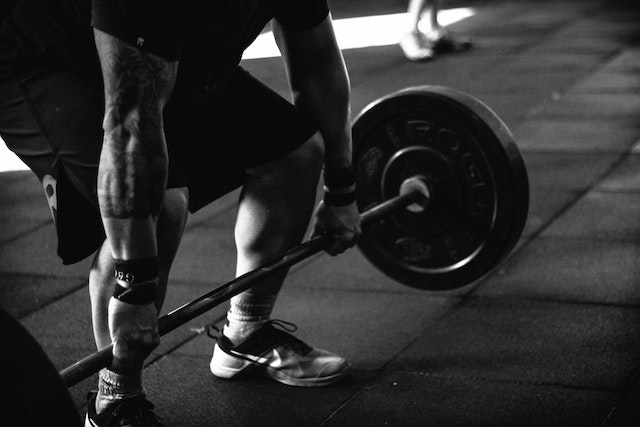Sets are groups of consecutive repetitions (reps) in an exercise routine. Reps are the number of times a specific movement is performed within each set.
TL:DR Sets Vs. Reps
In the context of exercise, “sets” and “reps” refer to fundamental terms. A “set” is a group of consecutive repetitions of an exercise, often with a brief rest between sets. “Reps,” short for repetitions, denote the number of times you perform a specific exercise or movement within a set. Together, sets and reps help structure and track workouts, determining intensity and fitness goals.
For instance, performing 3 sets of 10 reps means doing the exercise 10 times consecutively for three sets, while 5 sets of 5 reps would involve shorter bouts of exercise with more sets, emphasizing strength development.
Sets

Sets are a fundamental component of any workout routine. Simply put, a set is a group of consecutive repetitions performed without rest in between. It’s like completing a mini circuit within your larger exercise regimen.
When you perform multiple sets, you’re essentially breaking up your workout into smaller segments, allowing for brief periods of recovery before tackling the next set. This structured approach helps to maximize muscle growth and improve overall strength.
Reps

Reps, short for repetitions, are an essential aspect of any workout routine. They refer to the number of times you perform a specific exercise movement in one set. Reps play a crucial role in building strength and muscle endurance.
The ideal number of reps depends on your fitness goals. If you’re aiming for muscular strength and power, lower reps with heavier weights are recommended. On the other hand, if you want to improve muscle tone and endurance, higher reps with lighter weights can be more beneficial.
Performing reps correctly is just as important as the quantity. It’s essential to maintain proper form throughout each rep to maximize effectiveness and reduce the risk of injury. Focus on controlling your movements and engaging the targeted muscles.
Sets Vs. Reps – Key differences
| Aspect | Sets | Reps |
|---|---|---|
| Definition | Groups of consecutive repetitions | Number of times a specific exercise is performed |
| Focus | Determines the structure of a workout, including workload and rest intervals | Determines intensity and muscular endurance |
| Purpose | Helps organize and structure a training session | Indicates the quantity of effort in each set |
| Variability | Can vary in number within a workout routine | Typically consistent within a set |
| Training Goals | Influences strength, hypertrophy, and endurance goals | Indicates the level of muscular fatigue |
| Example | 3 sets of 10 reps means performing the exercise 10 times in each of the 3 sets | 5 reps at a heavy weight indicates low-repetition, high-weight training |
How many sets and reps should you do?
The number of sets and reps you should do in your workout depends on your fitness goals, experience level, and the specific exercise you’re performing. Here are some general guidelines for different fitness objectives:
- Strength: If you aim to build strength, focus on fewer reps (typically 1-6) per set with heavy weights. Perform 3-6 sets per exercise.
- Hypertrophy (Muscle Growth): For muscle growth, use moderate weights and do 6-12 reps per set. Aim for 3-5 sets.
- Endurance: To improve muscular endurance, use lighter weights and perform higher reps (around 12-20) per set. Do 2-4 sets.
- General Fitness: For overall fitness, a balanced approach can include 2-4 sets of 8-12 reps per exercise.
- Beginners: If you’re new to strength training, start with 1-2 sets of 8-12 reps to build a foundation.
- Advanced: Advanced athletes may incorporate more sets and reps with periodization to vary intensity.
Always prioritize proper form, progressively overload (increase weight or reps over time), and allow adequate rest between sets (usually 1-2 minutes for strength and hypertrophy, shorter for endurance).
If you are looking to take your training beyond these fundamentals, Jim Wendler’s Beyond 5/3/1 offers advanced strategies for setting up workouts tailored to more specific strength, hypertrophy, and endurance goals.
It’s important to consult with a fitness professional or trainer to design a personalized workout plan that aligns with your specific goals and abilities. Remember that individual factors, such as age, fitness level, and injury history, can influence your ideal sets and reps.
Tips for doing sets and reps
Executing sets and reps effectively is crucial for achieving your fitness goals and minimizing the risk of injury. Here are some tips for doing sets and reps:
- Plan Your Workout: Before starting, have a structured workout plan in place. Know how many sets and reps you’ll perform for each exercise.
- Warm Up: Prior to your main workout, warm up with light cardio and dynamic stretching to increase blood flow and flexibility.
- Use Proper Form: Maintain proper technique and form throughout each repetition. This reduces the risk of injury and maximizes the benefits.
- Control the Weight: Lift or lower weights slowly and under control. Avoid using momentum to lift the weight.
- Breathe Properly: Inhale during the eccentric (lowering) phase and exhale during the concentric (lifting) phase of each repetition.
- Progressive Overload: Gradually increase the weight or resistance as you become stronger to challenge your muscles.
- Rest Between Sets: Allow adequate rest between sets, typically 1-2 minutes for strength and hypertrophy, and shorter for endurance.
- Monitor Intensity: Pay attention to the level of intensity. It should be challenging but manageable for the targeted rep range.
- Stay Consistent: Consistency is key. Stick to your workout plan and gradually increase the weight or reps over time.
- Listen to Your Body: If you feel pain beyond normal muscle fatigue or discomfort, stop immediately and seek medical advice if necessary.
Image Credits
Featured Image By – Pexels from Pixabay
Image 1 By – Jonas from Pixabay
Image 2 By – Photo by Victor Freitas








